China and Covid19
Death of Lanzhou Toddler after Late Emergency Response Sparks Online Anger over China’s Covid Policies
“Unless you shut down the entire internet in Lanzhou, there is no way for you to cover this up.”
Published
2 years agoon
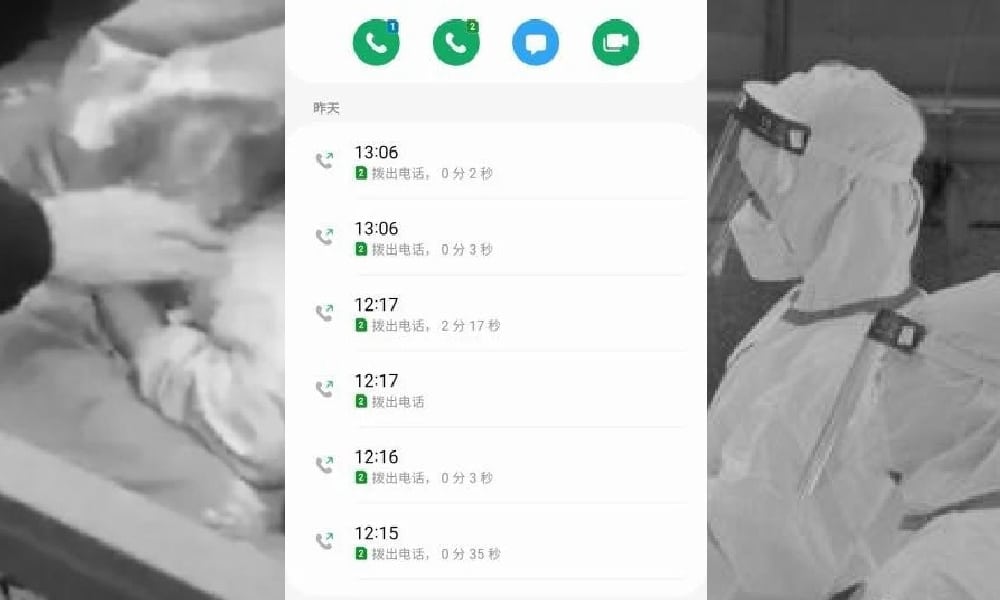
The emergency number was dialed at 12:15. The ambulance arrived at 14:03. Chinese social media users are lashing out at Lanzhou authorities and expressing anger over a failing emergency response system in light of the death of a 3-year-old child in one of the city’s Covid ‘high-risk areas.’
The death of a 3-year-old boy after carbon monoxide poisoning in Lanzhou, Gansu, has sparked anger on Chinese social media this week since there was a significant delay in medical care for the child due to epidemic prevention measures.
The incident happened early in the afternoon of November 1st in Lanzhou’s Qilihe District, where the 3-year-old boy and his mother suffered from carbon monoxide poisoning inside their home, both losing consciousness. The child was allegedly still alive and breathing after he was carried outside.
According to a WeChat report about the case, the father initially tried to rush the child to the hospital by himself but was stopped at an epidemic checkpoint where the staff did not allow them to go on.
Lanzhou is currently dealing with a local Covid outbreak, and the city of over three million inhabitants now has eight ‘high-risk areas’ – five of them are in the city’s Qilihe District.
After contacting emergency services, nothing reportedly happened for approximately half an hour, and the ambulance did not arrive. The father, whom we will refer to as ‘Mr Tuo’, tried to get through to the emergency hotline a second time, but was unsuccessful.
Thanks to the help of bystanders and neighbors, Mr Tuo eventually was able to get medical help for his wife and son. But by then, a lot of time had already gone to waste. Both the child and his mother arrived at the hospital after 14:00 in the afternoon. At around 15:00, the 3-year-old boy was pronounced dead.
The incident triggered outrage on Chinese social media, where people focused on the efficiency of emergency channels during local lockdowns amidst China’s zero Covid policy. Many people also discussed the apparent lack of humanity in some local lockdown measures.
“This child was only three years old. The epidemic has been going on for three years. He did not even get to see this world, and now he’s gone,” one commenter wrote on Weibo. “The epidemic prevention measures are harming so many people, what is Covid prevention really for? Where is your conscience?”
The Lanzhou Qilihe District Emergency Management Bureau sent out a statement on the night of November 1st, confirming that two family members suffered from carbon monoxide poisoning inside the family home. After being sent to hospital, the statement said, one person passed away after unsuccessful CPR, while the other was in stable condition. The statement warned people to make sure to correctly use gas-utilizing appliances inside their homes.
Although the statement, published by China Newsweek (中国新闻周刊), received over 140,000 likes and nearly 20,000 comments on Wednesday, not a single reply was available to view on Weibo at the time of writing, with the platform giving the standard notification that “comments are currently not available” (“抱歉,该内容暂时无法查看”).
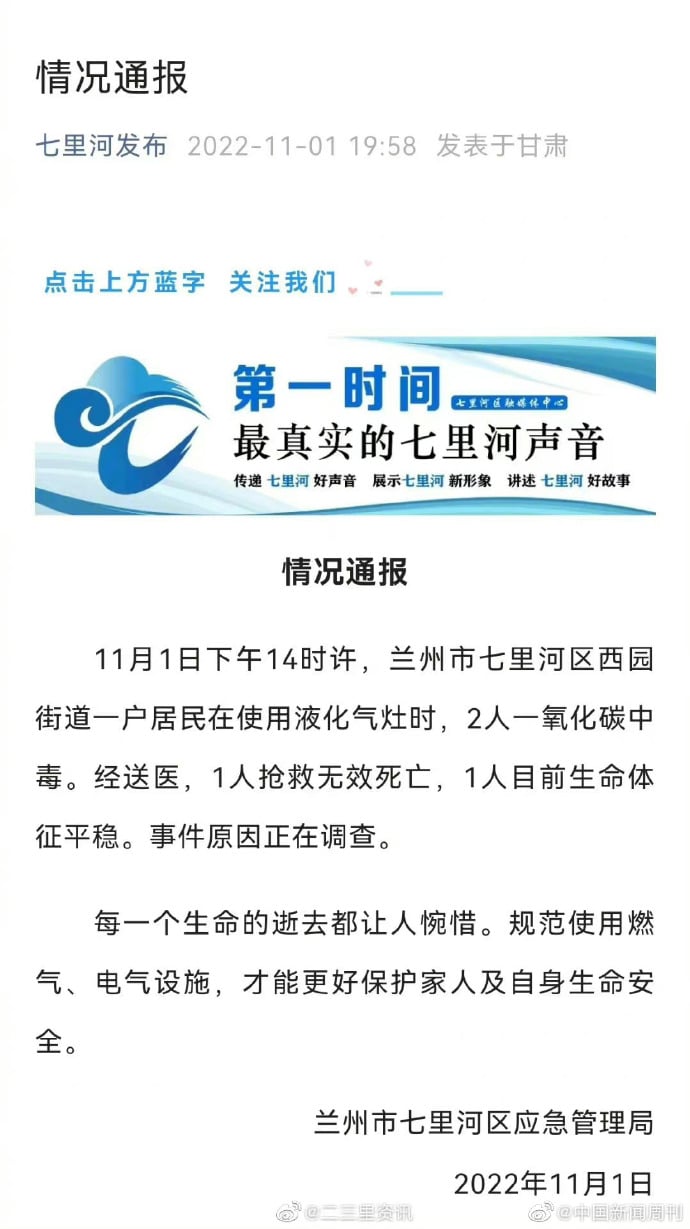
The hashtag “Notification by Lanzhou Qilihe” (#兰州七里河通报#) received over 450 million views on Weibo on Wednesday.
This is the second major incident this month where a child’s death is linked to a delay or unavailability of emergency services. In October, the death of a 14-year-old girl at a Ruzhou Covid quarantine site in Pingdingshan, Henan Province, also sparked anger on Chinese social media. There were no doctors at the quarantine site and the staff initially did not arrange medical care for the girl, despite the family pleading for help multiple times.
The current outburst of anger has been building up for months. Chinese social media users have repeatedly expressed despair and frustrations over similar issues throughout 2022, with many stories circulating online of patients dealing with medical emergencies and not getting the help they need due to local lockdowns and epidemic prevention measures, from Xi’an in January to Shanghai in April.
“Who is lying, who is covering things up? Where is your conscious? Tonight, a father is grieving his loss,” one popular Weibo author wrote, posting an image with the words: “Will this world ever be ok?”
The online censorship surrounding the Lanzhou case only fuelled public anger. Another Weibo blogger wrote: “It is ridiculous that when the child needed an ambulance, it did not show up after waiting so long. Yet when it’s about suppressing the victim’s family and the crowds protesting over this, you’re faster than light. Unless you shut down the entire internet in Lanzhou, there is no way for you to cover this up. Everyone in China knows it’s a lie, it’s useless to make people shut up.”
“This is crazy. These past few years there’s been too many things that are just beyond belief. Don’t the lives of ordinary people matter? How many people have lost their income and their jobs because of the pandemic, and still they need to join the rat race. I can’t blame the people with money for wanting to migrate.”
“He did not catch Covid, yet he died because of Covid,” another person wrote.
Timeline of Events
In light of all the online discussions over the incident, Lanzhou City posted a statement on November 3rd in which they expressed their sadness over the 3-year-old’s death and further detailed what allegedly happened on November 1st.
According to the report, the emergency hotline (120) first spoke to the father, Mr Tuo, at 12:18. He called three times before from 12:15 to 12:18, but did not connect with 120 because he allegedly did not call “long enough.”
At 12:18, the 120 emergency response staff supposedly only received information about a woman falling and being unconscious. Since the incident took place in a ‘high-risk area,’ the dispatcher first contacted Lanzhou City Medical Management via WeChat, followed by an incredibly time-wasting and fuzzy process including online communications involving Lanzhou City Medical Management’s medical staff, the Health Commission of the Qilihe District, doctors at the Qilihe District Hospital, and Mr Tuo.
A doctor at the Qilihe District Hospital allegedly received information about the case at 12:32 and then attempted to reach Mr Tuo by phone multiple times from 12:32 until 13:06. It was not until 13:19, after the doctor finally spoke to Tuo and had given him first aid instructions, that an ambulance was dispatched.
The report claims that it was only at 13:23, over an hour after Tuo’s first call, that they learned about a young child being in need of emergency treatment as well. Two more emergency calls were made at 13:32 and 13:34. Apparently, the seriousness of the situation was finally realized at around 13:44, an hour and a half after Tuo’s initial plea for help, as ambulance staff got the order to stop disinfecting their ambulance and immediately rush to the scene.
At one point, the Lanzhou City report also mentions that Tuo was not wearing a mask when desperately pleading for help at the epidemic checkpoint at around 13:15, presenting this as if it were an important fact in this life-and-death situation.
At 13:55, Tuo finally received help from a local officer in stopping a taxi, which took him and his little son to the children’s hospital. Meanwhile, it took the ambulance until 14:03 to arrive at the scene, which is when they provided medical assistance to Tuo’s wife and took her to the hospital.
Mr Tuo’s 3-year-old son reportedly already had no pulse when arriving at the hospital at 14:05. After unsuccessful CPR efforts, the little boy was declared dead at 15:00.
The boy’s mother was able to get help at the hospital, made a recovery, and was later discharged.
The report concludes that Lanzhou authorities have learned from this tragic experience, writing that its emergency rescue system is clearly “not smooth”, the emergency response capacity “not strong”, and that they will do all they can to prevent such incidents from happening again in the future.
On Weibo, where one hashtag related to the report received over 330 million views (#兰州通报儿童中毒死亡事件#), many netizens were in disbelief after reading the timeline of events.
“So today I learned that when someone does not answer the phone, it is because the other party did ‘not call long enough,'” one person wrote.
“Lives don’t matter, whether or not you wear a face mask matters,” others replied.
One Weibo user wrote: “They dispatched an ambulance at 13:19 and it did not arrive until 14:03?”
Some also wondered why the first emergency response was to deal with the situation through online consultation, although Tuo had already indicated his wife was unconscious. “That one officer showed some humanity, but the rest of them acted like robots,” a popular comment said.
Amid the online outpouring of anger, the former Global Times editor-in-chief and well-known commentator Hu Xijin (@胡锡进) also responded to this issue. In his post, Hu focused on the last paragraph of the Lanzhou City statement, reiterating that this incident made them aware of their sluggish and inept emergency response system. Hu expressed that he hoped this tragedy could serve as a lesson, not just for Lanzhou but for every region across China, that every minute counts when it’s about rescuing people’s lives.
Despite the report and Hu’s comments, the anger remains. One popular comment on Douyin said: “You can all draw your lessons from this, but what about the child? Three years old. Gone. A family has been torn. How many more cases do you need in order to learn your lesson?”
Another commenter wrote: “I am not afraid of the epidemic, it’s the people I’m afraid of. My heart goes out to this child.”
By Manya Koetse , with contributions by Miranda Barnes
Get the story behind the hashtag. Subscribe to What’s on Weibo here to receive our newsletter and get access to our latest articles:
Spotted a mistake or want to add something? Please let us know in comments below or email us. First-time commenters, please be patient – we will have to manually approve your comment before it appears.
©2022 Whatsonweibo. All rights reserved. Do not reproduce our content without permission – you can contact us at info@whatsonweibo.com.
Manya Koetse is the founder and editor-in-chief of whatsonweibo.com. She is a writer, public speaker, and researcher (Sinologist, MPhil) on social trends, digital developments, and new media in an ever-changing China, with a focus on Chinese society, pop culture, and gender issues. She shares her love for hotpot on hotpotambassador.com. Contact at manya@whatsonweibo.com, or follow on Twitter.

Also Read
China and Covid19
Sick Kids, Worried Parents, Overcrowded Hospitals: China’s Peak Flu Season on the Way
“Besides Mycoplasma infections, cases include influenza, Covid-19, Norovirus, and Adenovirus. Heading straight to the hospital could mean entering a cesspool of viruses.”
Published
8 months agoon
November 22, 2023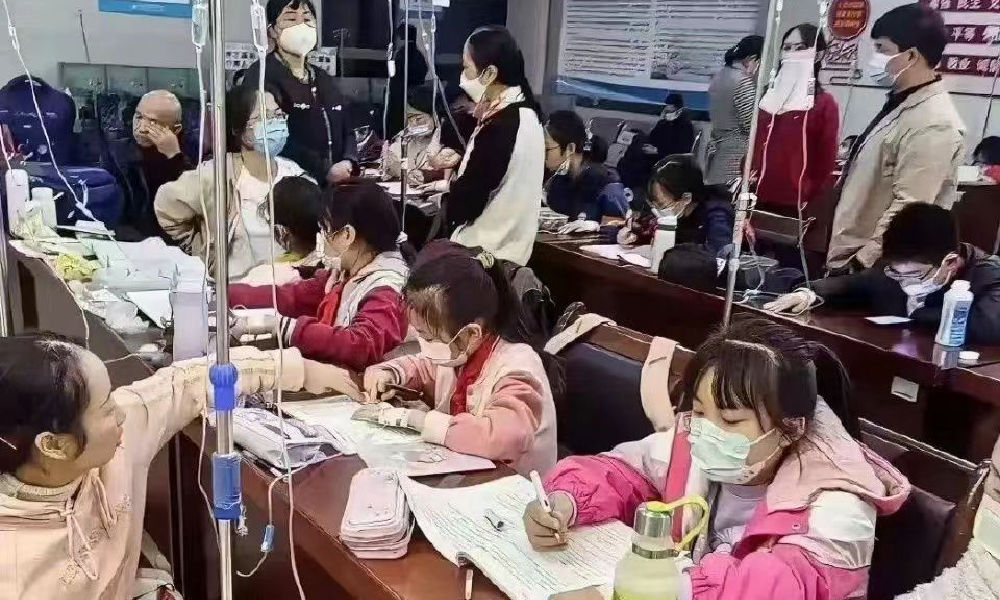
In the early morning of November 21, parents are already queuing up at Xi’an Children’s Hospital with their sons and daughters. It’s not even the line for a doctor’s appointment, but rather for the removal of IV needles.
The scene was captured in a recent video, only one among many videos and images that have been making their rounds on Chinese social media these days (#凌晨的儿童医院拔针也要排队#).
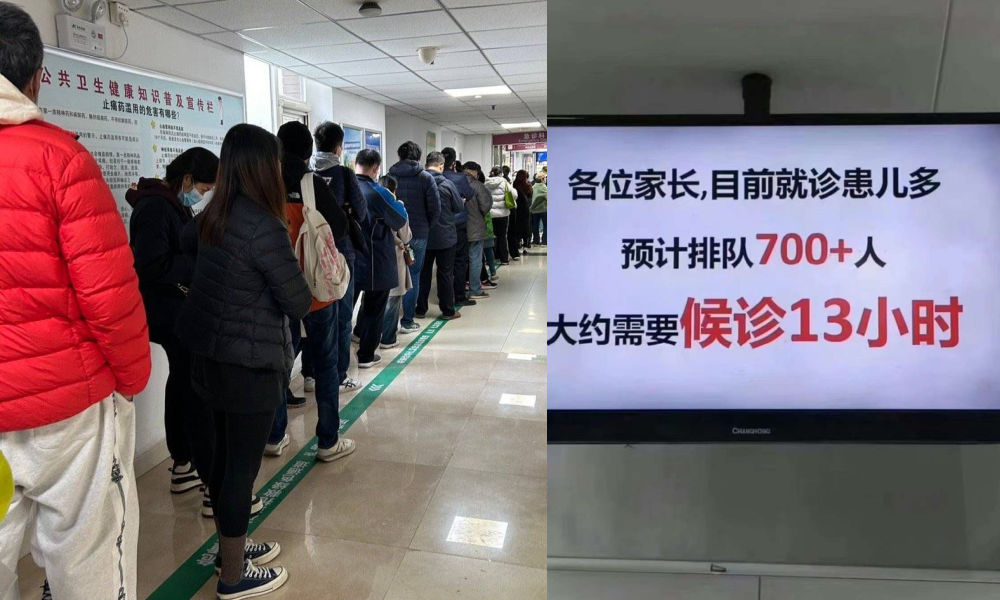
One photo shows a bulletin board at a local hospital warning parents that over 700 patients are waiting in line, estimating a waiting time of more than 13 hours to see a doctor.
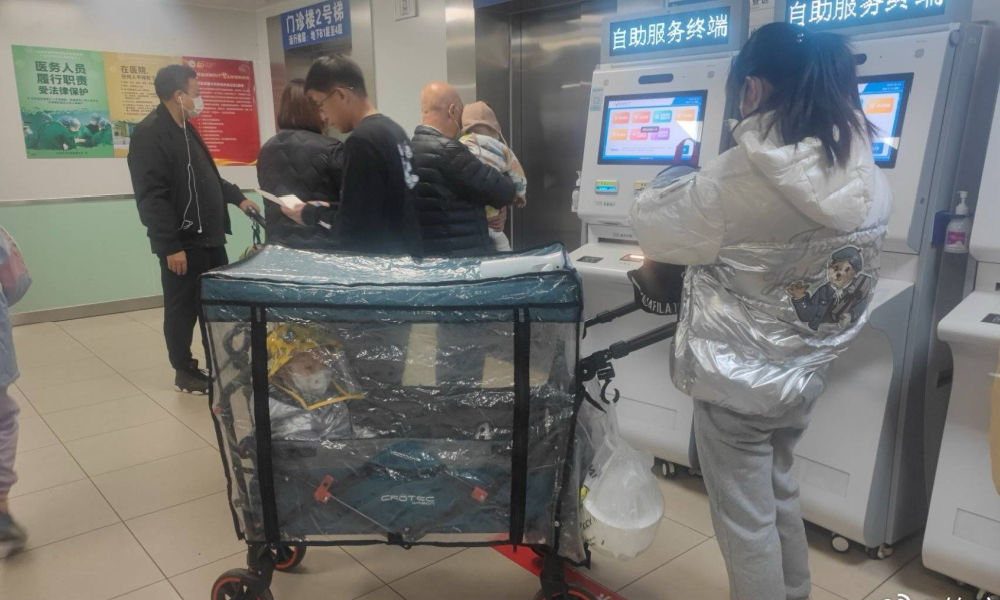
Another image shows children doing their homework while hooked up on an IV.

Recent discussions on Chinese social media platforms have highlighted a notable surge in flu cases. The ongoing flu season is particularly impacting children, with multiple viruses concurrently circulating and contributing to a high incidence of respiratory infections.
Among the prevalent respiratory infections affecting children are Mycoplasma pneumoniae infections, influenza, and Adenovirus infection.
The spike in flu cases has resulted in overcrowded children’s hospitals in Beijing and other Chinese cities. Parents sometimes have to wait in line for hours to get an appointment or pick up medication.
According to one reporter at Haibao News (海报新闻), there were so many patients at the Children’s Hospital of Capital Institute of Pediatrics (首都儿科研究所) on November 21st that the outpatient desk stopped accepting new patients by the afternoon. Meanwhile, 628 people were waiting in line to see a doctor at the emergency department.
Reflecting on the past few years, the current flu season marks China’s first ‘normal’ flu peak season since the outbreak of Covid-19 in late 2019 / early 2020 and the end of its stringent zero-Covid policies in December 2022. Compared to many other countries, wearing masks was also commonplace for much longer following the relaxation of Covid policies.
Hu Xijin, the well-known political commentator, noted on Weibo that this year’s flu season seems to be far worse than that of the years before. He also shared that his own granddaughter was suffering from a 40 degrees fever.
“We’re all running a fever in our home. But I didn’t dare to go to the hospital today, although I want my child to go to the hospital tomorrow. I heard waiting times are up to five hours now,” one Weibo user wrote.
“Half of the kids in my child’s class are sick now. The hospital is overflowing with people,” another person commented.
One mother described how her 7-year-old child had been running a fever for eight days already. Seeking medical attention on the first day, the initial diagnosis was a cold. As the fever persisted, daily visits to the hospital ensued, involving multiple hours for IV fluid administration.
While this account stems from a single Weibo post within a fever-advice community, it highlights a broader trend: many parents swiftly resort to hospital visits at the first signs of flu or fever. Several factors contribute to this, including a lack of General Practitioners in China, making hospitals the primary choice for medical consultations also in non-urgent cases.
There is also a strong belief in the efficacy of IV infusion therapy, whether fluid-based or containing medication, as the quickest path to recovery. Multiple factors contribute to the widespread and sometimes irrational use of IV infusions in China. Some clinics are profit-driven and see IV infusions as a way to make more money. Widespread expectations among Chinese patients that IV infusions will make them feel better also play a role, along with some physicians’ lacking knowledge of IV therapy or their uncertainty to distinguish bacterial from viral infections (read more here)
To prevent an overwhelming influx of patients to hospitals, Chinese state media, citing specialists, advise parents to seek medical attention at the hospital only for sick infants under three months old displaying clear signs of fever (with or without cough). For older children, it is recommended to consult a doctor if a high fever persists for 3 to 5 days or if there is a deterioration in respiratory symptoms. Children dealing with fever and (mild) respiratory symptoms can otherwise recover at home.
One Weibo blogger (@奶霸知道) warned parents that taking their child straight to the hospital on the first day of them getting sick could actually be a bad idea. They write:
“(..) pediatric departments are already packed with patients, and it’s not just Mycoplasma infections anymore. Cases include influenza, Covid-19, Norovirus, and Adenovirus. And then, of course, those with bad luck are cross-infected with multiple viruses at the same time, leading to endless cycles. Therefore, if your child experiences mild coughing or a slight fever, consider observing at home first. Heading straight to the hospital could mean entering a cesspool of viruses.”
The hashtag for “fever” saw over 350 million clicks on Weibo within one day on November 22.
Meanwhile, there are also other ongoing discussions on Weibo surrounding the current flu season. One topic revolves around whether children should continue doing their homework while receiving IV fluids in the hospital. Some hospitals have designated special desks and study areas for children.
Although some commenters commend the hospitals for being so considerate, others also remind the parents not to pressure their kids too much and to let them rest when they are not feeling well.
Opinions vary: although some on Chinese social media say it's very thoughtful for hospitals to set up areas where kids can study and read, others blame parents for pressuring their kids to do homework at the hospital instead of resting when not feeling well. pic.twitter.com/gnQD9tFW2c
— Manya Koetse (@manyapan) November 22, 2023
By Manya Koetse, with contributions from Miranda Barnes
Get the story behind the hashtag. Subscribe to What’s on Weibo here to receive our newsletter and get access to our latest articles:
Spotted a mistake or want to add something? Please let us know in comments below or email us. First-time commenters, please be patient – we will have to manually approve your comment before it appears.
©2023 Whatsonweibo. All rights reserved. Do not reproduce our content without permission – you can contact us at info@whatsonweibo.com.
China and Covid19
Repurposing China’s Abandoned Nucleic Acid Booths: 10 Innovative Transformations
Abandoned nucleic acid booths are getting a second life through these new initiatives.
Published
1 year agoon
May 19, 2023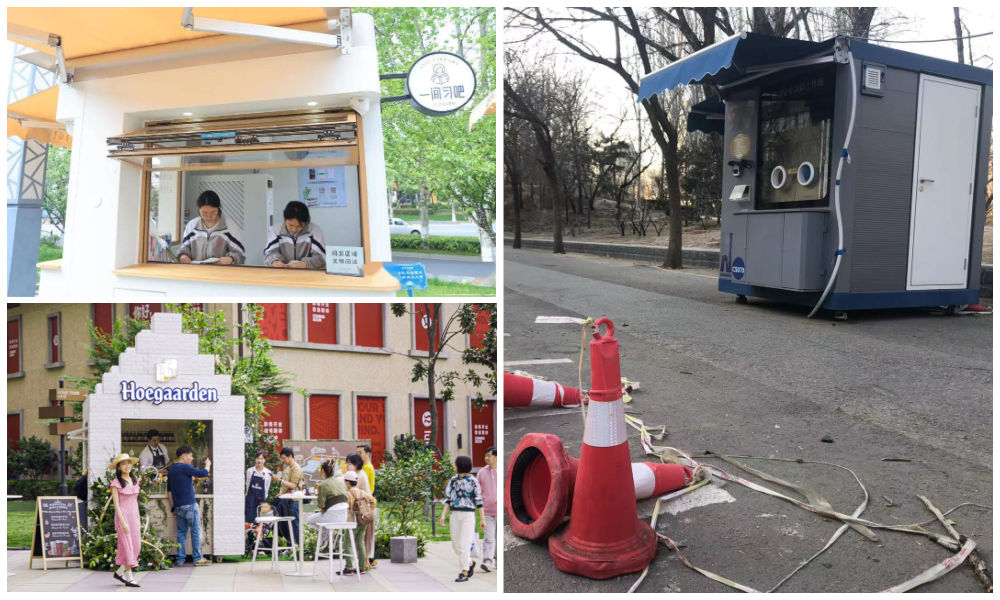
During the pandemic, nucleic acid testing booths in Chinese cities were primarily focused on maintaining physical distance. Now, empty booths are being repurposed to bring people together, serving as new spaces to serve the community and promote social engagement.
Just months ago, nucleic acid testing booths were the most lively spots of some Chinese cities. During the 2022 Shanghai summer, for example, there were massive queues in front of the city’s nucleic acid booths, as people needed a negative PCR test no older than 72 hours for accessing public transport, going to work, or visiting markets and malls.
The word ‘hésuān tíng‘ (核酸亭), nucleic acid booth (also:核酸采样小屋), became a part of China’s pandemic lexicon, just like hésuān dìtú (核酸地图), the nucleic acid test map lauched in May 2022 that would show where you can get a nucleic test.
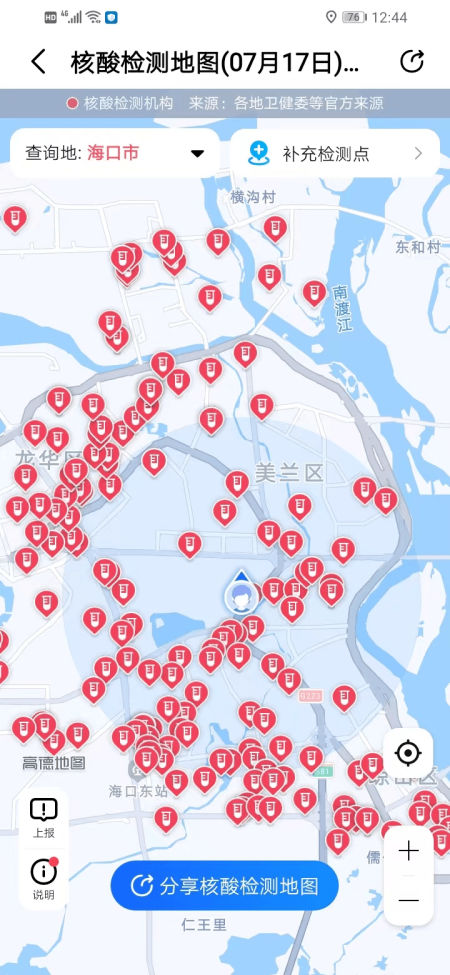
Example of nucleic acid test map.
During Halloween parties in Shanghai in 2022, some people even came dressed up as nucleic test booths – although local authorities could not appreciate the creative costume.
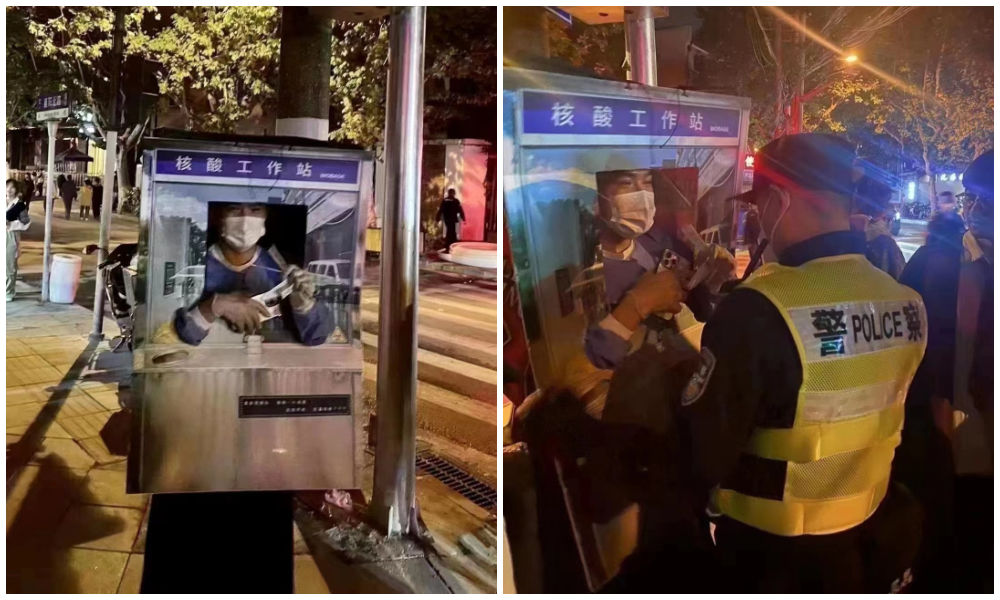
Halloween 2022: dressed up as nucliec acid booths. Via @manyapan twitter.
In December 2022, along with the announced changed rules in China’s ‘zero Covid’ approach, nucleic acid booths were suddenly left dismantled and empty.
With many cities spending millions to set up these booths in central locations, the question soon arose: what should they do with the abandoned booths?
This question also relates to who actually owns them, since the ownership is mixed. Some booths were purchased by authorities, others were bought by companies, and there are also local communities owning their own testing booths. Depending on the contracts and legal implications, not all booths are able to get a new function or be removed yet (Worker’s Daily).
In Tianjin, a total of 266 nucleic acid booths located in Jinghai District were listed for public acquisition earlier this month, and they were acquired for 4.78 million yuan (US$683.300) by a local food and beverage company which will transform the booths into convenience service points, selling snacks or providing other services.
Tianjin is not the only city where old nucleic acid testing booths are being repurposed. While some booths have been discarded, some companies and/or local governments – in cooperation with local communities – have demonstrated creativity by transforming the booths into new landmarks. Since the start of 2023, different cities and districts across China have already begun to repurpose testing booths. Here, we will explore ten different way in which China’s abandoned nucleic test booths get a second chance at a meaningful existence.
1: Pharmacy/Medical Booths
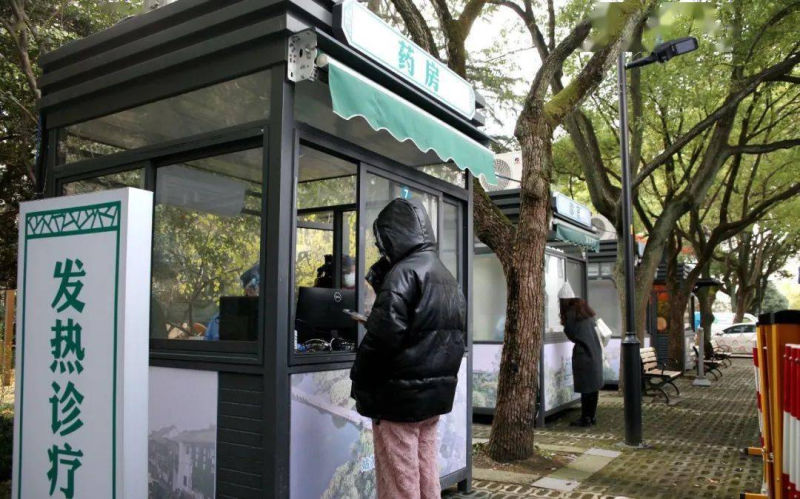
Via ‘copyquan’ republished on Sohu.
Blogger ‘copyquan’ recently explored various ways in which abandoned PCR testing points are being repurposed.
One way in which they are used is as small pharmacies or as medical service points for local residents (居民医疗点). Alleviating the strain on hospitals and pharmacies, this was one of the earliest ways in which the booths were repurposed back in December of 2022 and January of 2023.
Chongqing, Tianjin, and Suzhou were among earlier cities where some testing booths were transformed into convenient medical facilities.
2: Market Stalls
In Suzhou, Jiangsu province, the local government transformed vacant nucleic acid booths into market stalls for the Spring Festival in January 2022, offering them free of charge to businesses to sell local products, snacks, and traditional New Year goods.
The idea was not just meant as a way for small businesses to conveniently sell to local residents, it was also meant as a way to attract more shoppers and promote other businesses in the neighborhood.
3: Community Service Center

Small grid community center in Shizhuang Village, image via Sohu.
Some residential areas have transformed their local nucleic acid testing booths into community service centers, offering all kinds of convenient services to neighborhood residents.
These little station are called wǎnggé yìzhàn (网格驿站) or “grid service stations,” and they can serve as small community centers where residents can get various kinds of care and support.
4: “Refuel” Stations
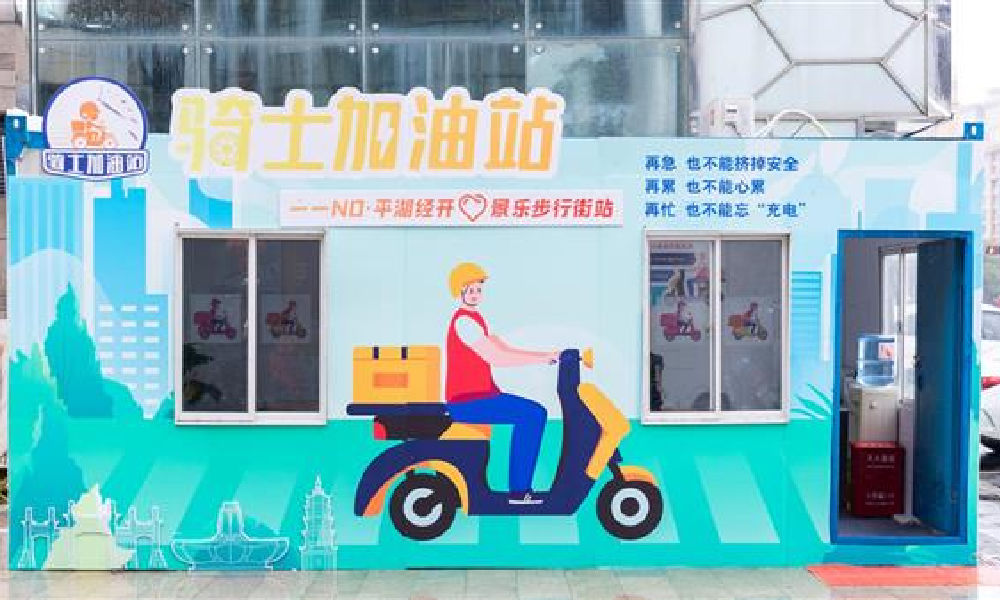
In February of this year, 100 idle nucleic acid sampling booths were transformed into so-called “Rider Refuel Stations” (骑士加油站) in Zhejiang’s Pinghu. Although it initially sounds like a place where delivery riders can fill up their fuel tanks, it is actually meant as a place where they themselves can recharge.
Delivery riders and other outdoor workers can come to the ‘refuel’ station to drink some water or tea, warm their hands, warm up some food and take a quick nap.
5: Free Libraries
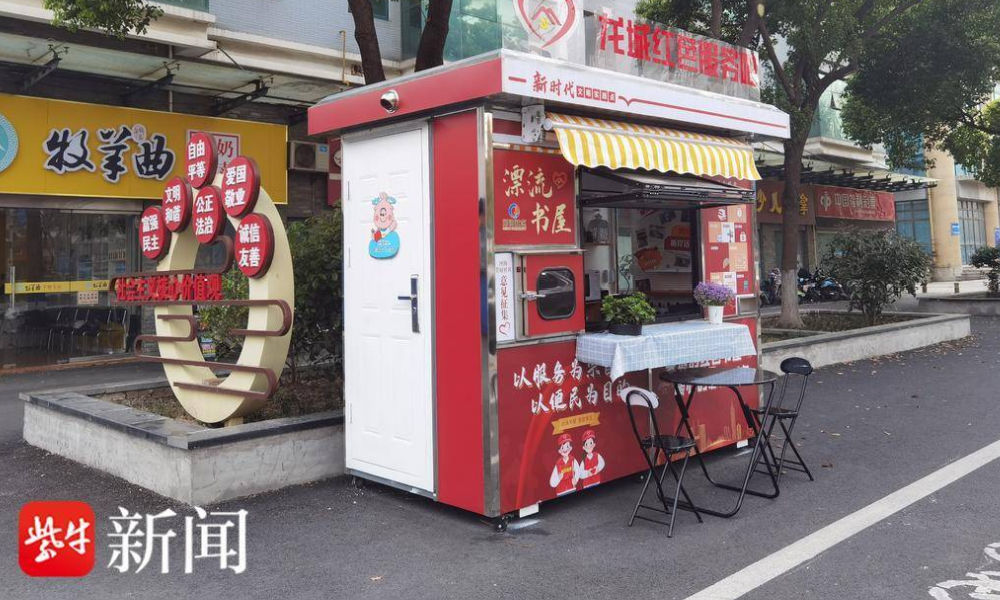
image via sohu.
In various Chinese cities, abandoned nucleic acid booths have been transformed into little free libraries where people can grab some books to read, donate or return other books, and sit down for some reading.
Changzhou is one of the places where you’ll find such “drifting bookstores” (漂流书屋) (see video), but similar initiatives have also been launched in other places, including Suzhou.
6: Study Space
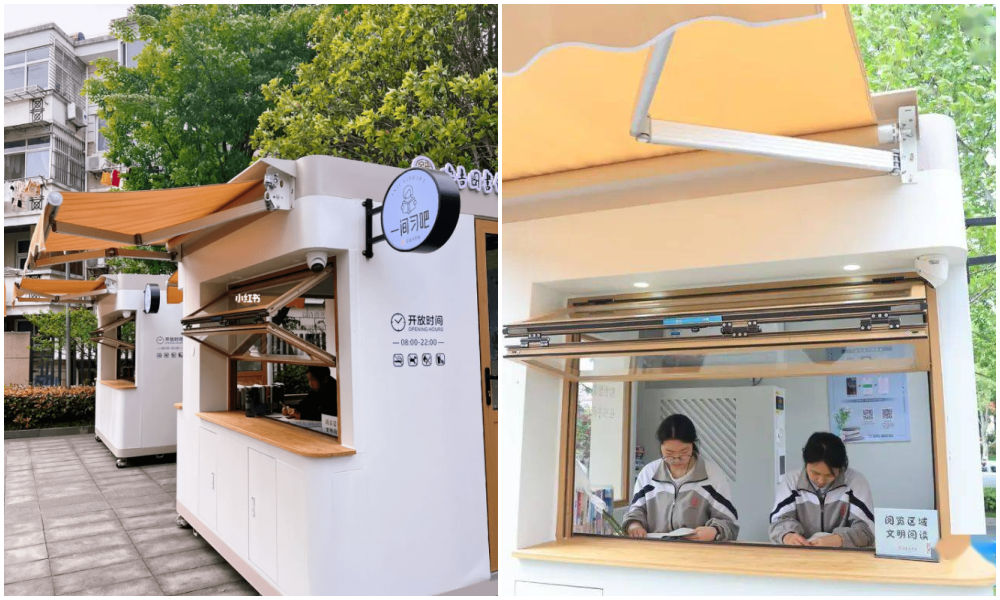
Photos via Copyquan’s article on Sohu.
Another innovative way in which old testing points are being repurposed is by turning them into places where students can sit together to study. The so-called “Let’s Study Space” (一间习吧), fully airconditioned, are opened from 8 in the morning until 22:00 at night.
Students – or any citizens who would like a nice place to study – can make online reservations with their ID cards and scan a QR code to enter the study rooms.
There are currently ten study booths in Anji, and the popular project is an initiative by the Anji County Library in Zhejiang (see video).
7: Beer Kiosk
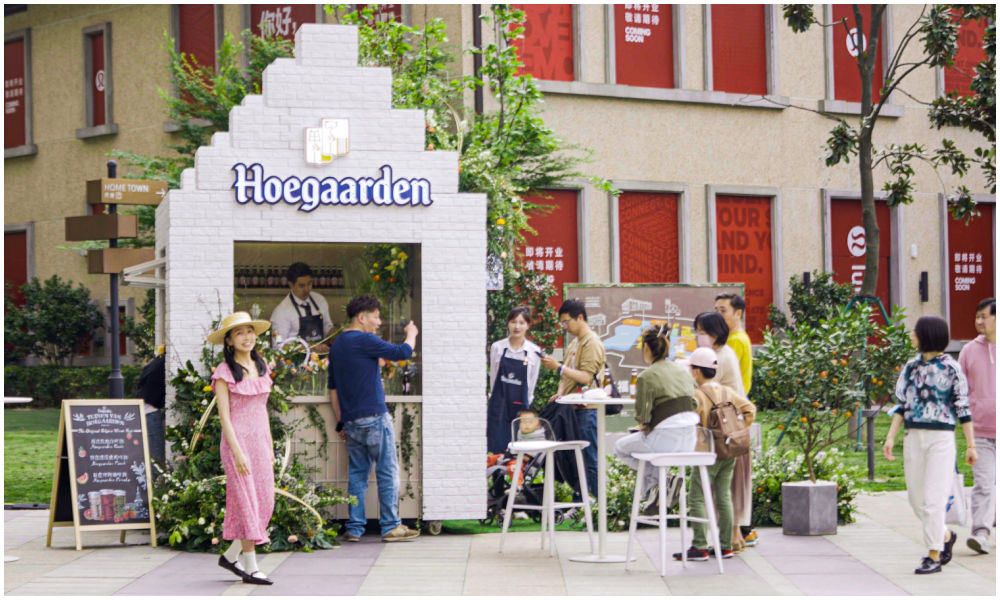
Hoegaarden beer shop, image via Creative Adquan.
Changing an old nucleic acid testing booth into a beer bar is a marketing initiative by the Shanghai McCann ad agency for the Belgium beer brand Hoegaarden.
The idea behind the bar is to celebrate a new spring after the pandemic. The ad agency has revamped a total of six formr nucleic acid booths into small Hoegaarden ‘beer gardens.’
8: Police Box
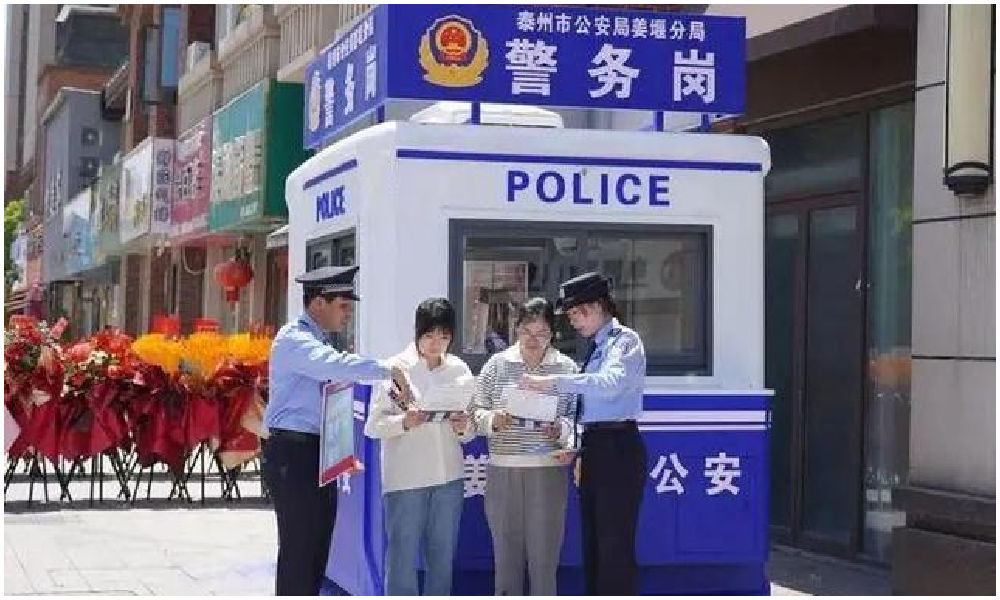
In Taizhou City, Jiangsu Province, authorities have repurposed old testing booths and transformed them into ‘police boxes’ (警务岗亭) to enhance security and improve the visibility of city police among the public.
Currently, a total of eight vacant nucleic acid booths have been renovated into modern police stations, serving as key points for police presence and interaction with the community.
9: Lottery Ticket Booths
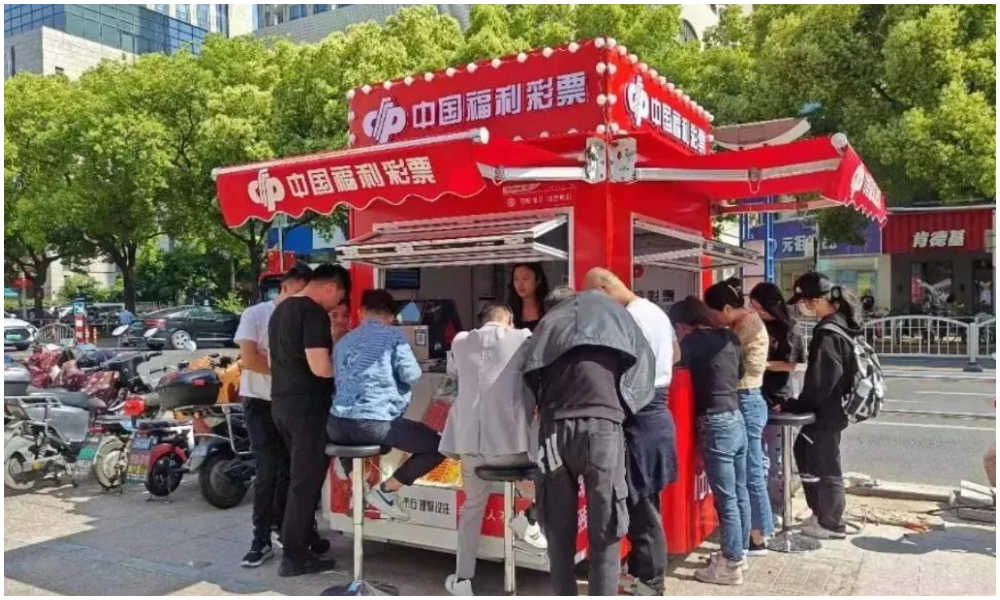
Image via The Paper
Some nucleic acid booths have now been turned into small shops selling lottery tickets for the China Welfare Lottery. One such place turning the kiosks into lottery shops is Songjiang in Shanghai.
Using the booths like this is a win-win situation: they are placed in central locations so it is more convenient for locals to get their lottery tickets, and on the other hand, the sales also help the community, as the profits are used for welfare projects, including care for the elderly.
10: Mini Fire Stations
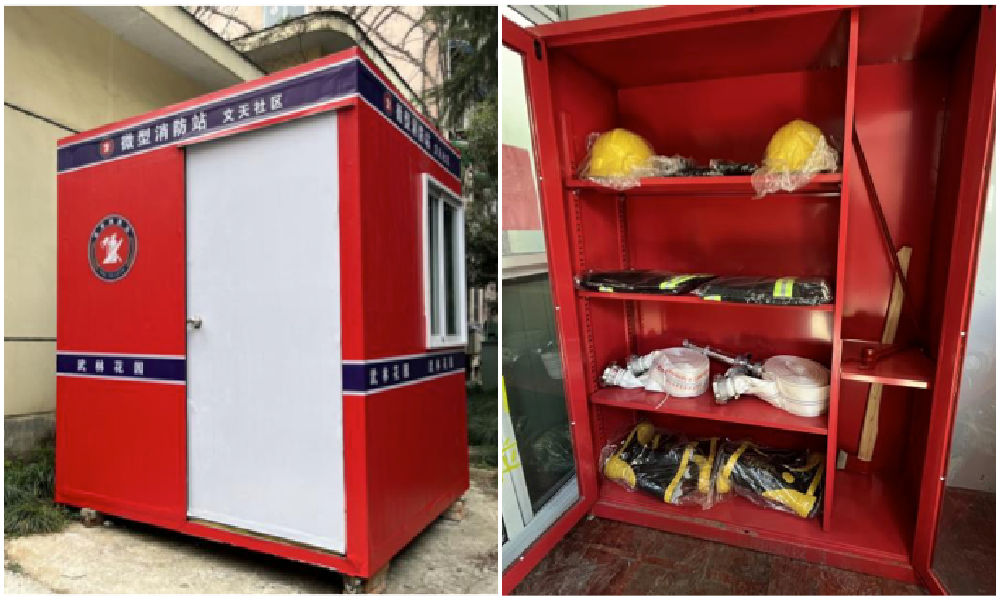
Micro fire stations, images via ZjNews.
Some communities decided that it would be useful to repurpose the testing points and turn them into mini fire kiosks, just allowing enough space for the necessary equipment to quickly respond to fire emergencies.
Want to read more about the end of ‘zero Covid’ in China? Check our other articles here.
By Manya Koetse,
Get the story behind the hashtag. Subscribe to What’s on Weibo here to receive our newsletter and get access to our latest articles:
Spotted a mistake or want to add something? Please let us know in comments below or email us. First-time commenters, please be patient – we will have to manually approve your comment before it appears.
©2023 Whatsonweibo. All rights reserved. Do not reproduce our content without permission – you can contact us at info@whatsonweibo.com.
Subscribe

Weibo Watch: The Future is Here

“Bye Bye Biden”: Biden’s Many Nicknames in Chinese

Enjoying the ‘Sea’ in Beijing’s Ditan Park

A Triumph for “Comrade Trump”: Chinese Social Media Reactions to Trump Rally Shooting

Weibo Watch: Get Up, Stand Up

The Tragic Story of “Fat Cat”: How a Chinese Gamer’s Suicide Went Viral

“Old Bull Eating Young Grass”: 86-Year-Old Chinese Painter Fan Zeng Marries 36-Year-Old Xu Meng

A Brew of Controversy: Lu Xun and LELECHA’s ‘Smoky’ Oolong Tea

Singing Competition or Patriotic Fight? Hunan TV’s ‘Singer 2024’ Stirs Nationalistic Sentiments

Zara Dress Goes Viral in China for Resemblance to Haidilao Apron

Weibo Watch: The Battle for the Bottom Bed

About the “AI Chatbot Based on Xi Jinping” Story

China’s Intensified Social Media Propaganda: “Taiwan Must Return to Motherland”

Weibo Watch: Telling China’s Stories Wrong

Saying Goodbye to “Uncle Wang”: Wang Wenbin Becomes Chinese Ambassador to Cambodia
Get in touch
Would you like to become a contributor, or do you have any tips or suggestions? Get in touch here!
Popular Reads
-

 China Insight3 months ago
China Insight3 months agoThe Tragic Story of “Fat Cat”: How a Chinese Gamer’s Suicide Went Viral
-

 China Music4 months ago
China Music4 months agoThe Chinese Viral TikTok Song Explained (No, It’s Not About Samsung)
-

 China Digital10 months ago
China Digital10 months agoToo Sexy for Weibo? Online Discussions on the Concept of ‘Cābiān’
-

 China Arts & Entertainment12 months ago
China Arts & Entertainment12 months agoBehind 8 Billion Streams: Who is Dao Lang Cursing in the Chinese Hit Song ‘Luocha Kingdom’?





